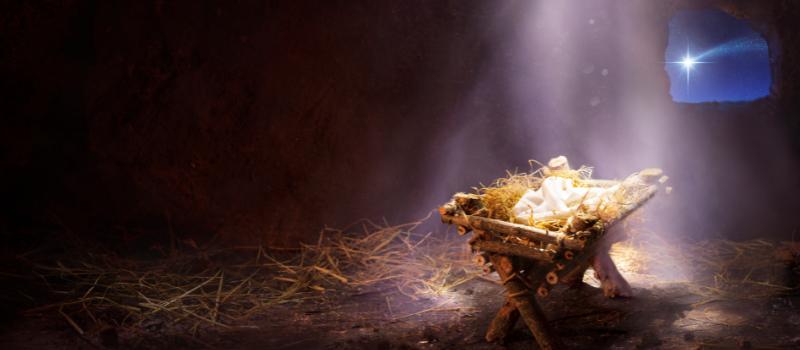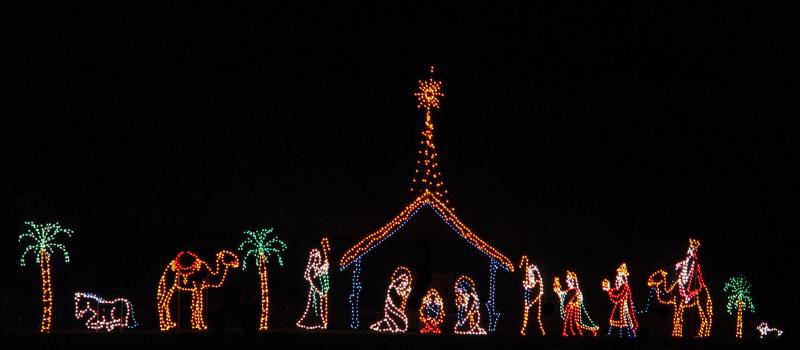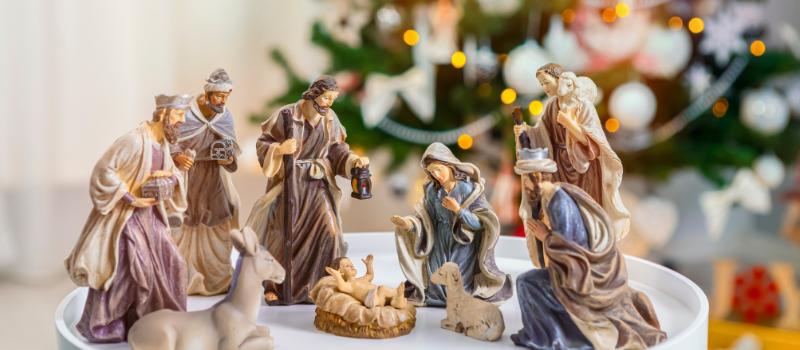Christmas Nativity scenes, also known as a crèche, have been a beloved part of Christmas traditions for centuries. The arrangement is meant to depict the birth of Jesus Christ, with figures representing Mary, Joseph, the shepherds, and the three Wise Men gathered around the newborn baby in a stable.

The history of Nativity scenes and mangers dates back to the 13th century when it is believed that Saint Francis of Assisi created the first Nativity scene in a cave outside of the Italian town of Greccio. Francis, who was known for his love of nature and animals, was inspired to create a live Nativity scene with animals to help bring the story of the birth of Jesus to life for the people of the town. The Nativity scene was a huge success and became a popular tradition in the region.
Over time, Nativity scenes and mangers evolved and were typically set up in churches and public spaces, and later became popular decorations in homes during the Christmas season.
Their use varies around the world. In Italy and Spain, for example, Nativities are an important part of Christmas traditions, with many families setting up elaborate scenes in their homes, complete with miniature villages and landscapes. In Germany and Austria, it is common to see them outdoors in public places, such as town squares and church courtyards.
One common feature is the use of a manger or crib, which is the feeding trough that is traditionally used for livestock. In the Nativity scene, the manger serves as the bed for the baby Jesus. The use of a manger is a reminder of the humble circumstances in which Jesus was born, and the simplicity and humility that he preached throughout his life.

The placement of the scenes varies depending on the culture and traditions of the community. In some countries, it is common to place it in the center of the home, or in the main living area, to serve as a reminder of the true meaning of Christmas. In other cultures, the Nativity scene is placed in a prominent spot in the church, such as the altar or the entrance. This allows parishioners to reflect on the story of the birth of Jesus before and after Mass.
In modern times, they continue to be a popular part of Christmas traditions around the world. Many families have their own Nativity sets that they set up each year, with some families passing them down through generations. In some communities, there are even competitions for the most elaborate and creative Nativity scenes, with prizes awarded for the best displays.

In addition to traditional Nativity scenes, there are also modern interpretations of the Nativity story. Some artists have created abstract or contemporary display, using unconventional materials or imagery to represent the story of the birth of Jesus. These interpretations provide a new perspective on the story, and allow people to connect with the Nativity story in new and creative ways.
Nativity scenes and mangers also serve as a reminder of the true meaning of Christmas. In a world where Christmas has become increasingly commercialized, Mangers scenes remind us to focus on the spiritual aspect of the holiday, and to reflect on the miracle of the birth of Jesus. They serve as a reminder of the simplicity and humility of the Nativity story, and the message of love and compassion that Jesus preached throughout his life.

Find a crèche that suits your home.
These porcelain figures could be beautiful by themselves. They would be wonderful as a gift for a first time set.
This scene of stand alone resin figures is classic and could also be a beautiful addition to almost any stable.
Not finding just the right set. Click below to find a full selection.





